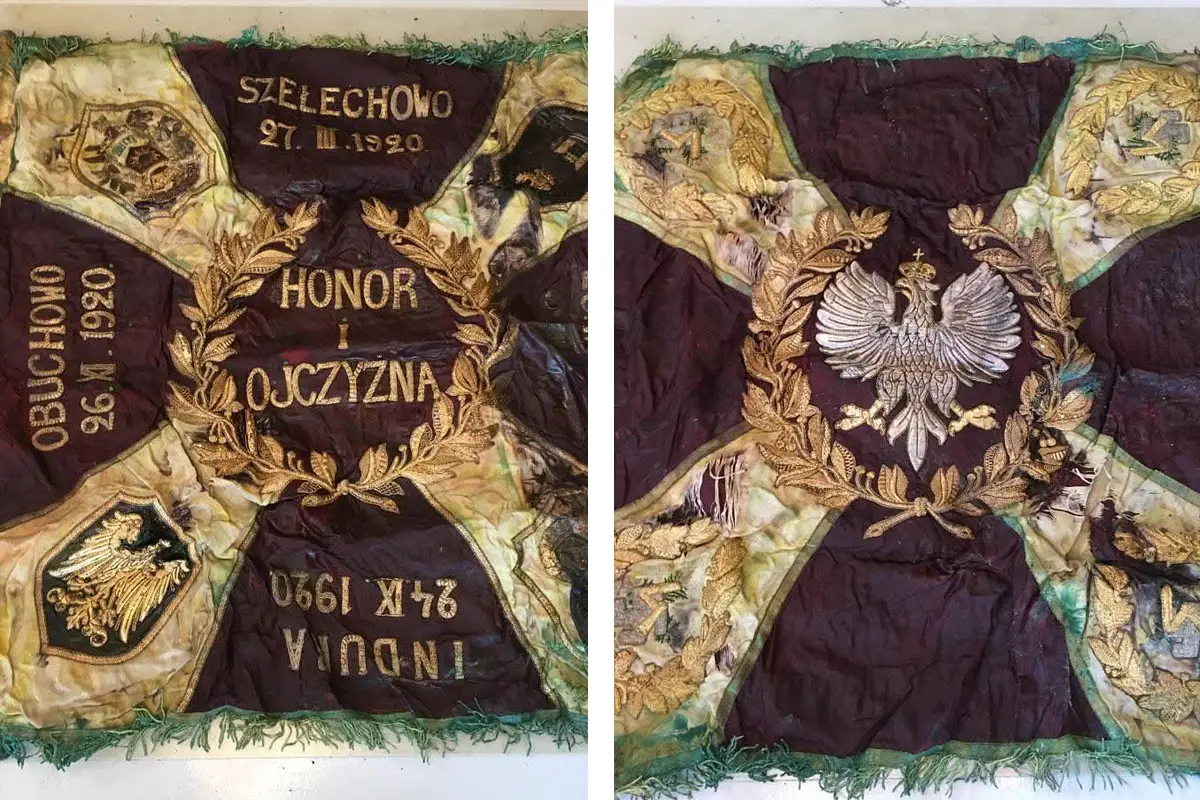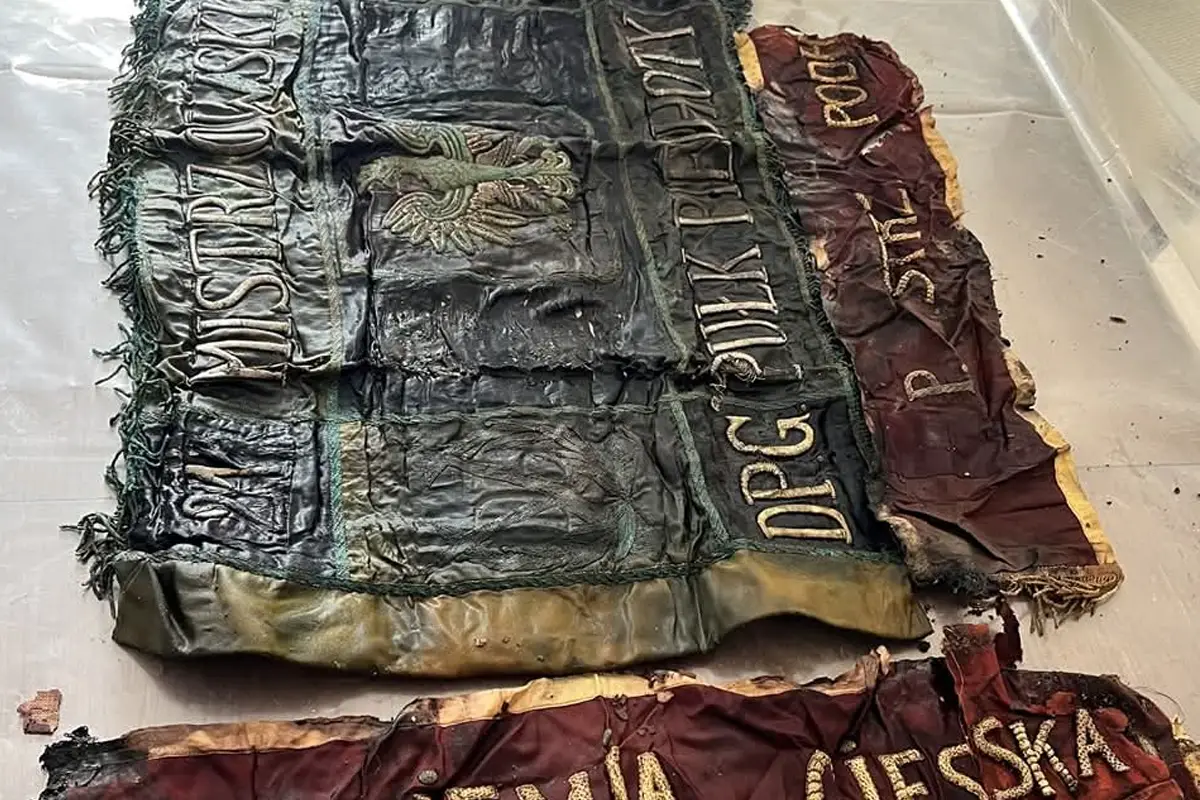Two nationally important WWII military treasures have been unearthed in the State Forests of Poland.
The discovery was made by Mr. Maciej Podgórskim, owner of the Museum of the 3rd Legions Infantry Division, and his associate Piotr Szynala, while conducting a search in the forests near the village of Zielone.
The pair found two tightly sealed tarpaulin covers which appear to be intentionally buried. One contained the proportion (award pennant) sash of the 21st Infantry Division, and the other, the banner of the 4th Podhale Rifles Regiment.
Upon realising the significance of the discovery, they contacted the archaeological team from the University of Lublin in Zamość. Despite being buried for 86 years, both relics appear to be extremely well preserved and have been sent to the Museum in Tomaszów Lubelski.
The Proportion of the 21st Infantry Division is an honorary sash awarded for excellence in marksmanship within the 21st Infantry Division. It was last presented in 1938 to the 4th Podhale Rifles Regiment.

The recovered banner of the 4th Podhale Rifles Regiment was originally presented to the regiment in 1924, handcrafted in gold and silver thread by the Felician Sisters of the now-defunct convent in Czechowice-Dziedzice.
Also unearthed were regimental ribbons inscribed with “Ziemia Cieszyńska” and “4 P. Strz. Podh.”. The ribbons date to the original bestowal of the regimental banner in 1924 and feature an eagle emblem marked 4 PSP.
According to the Lublin Voivodeship Conservator of Monuments (LWKZ), “The 4th Podhale Rifles Regiment traces its origins to Polish units formed in Italy and France during the end of WWI. The unit fought in the Polish–Ukrainian and Polish–Soviet wars.”
Following the German invasion of Poland, the regiment was sent to southern Poland but suffered heavy losses near Dzików Nowy and Duchów. The surviving members joined nearby regiments and participated in the Battle of Tomaszów Lubelski.
Surviving soldiers recounted that the regimental banner had been secretly buried, but attempts by veterans to locate the burial site in the 1960s proved unsuccessful. It is now believed that the banner’s staff and the eagle finial may still be buried nearby or just beneath the current discovery site, warranting further investigation by archaeologists.
Header Image Credit : LWKZ – M. Podgórski
Sources : Lublin Voivodeship Conservator of Monuments







